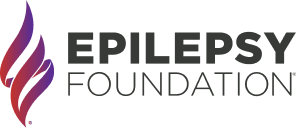Developmental/Epileptic Encephalopathy with Spike Wave Activation In Sleep (DEE-SWAS)
What Is DEE-SWAS?
This type of epilepsy was previously known as CSWS, ESES, or epilepsy with continuous spike-wave during slow wave sleep.
Diagnosis of DEE-SWAS requires both of the following features:
- Failure to attain new developmental skills or loss of skills
- An EEG showing significant activation of abnormal discharge in sleep, compared to being awake
DEE-SWAS is a rare form of epilepsy, affecting 1 out of 200 (0.5%) children with epilepsy. It starts in children between 2 and 12 years of age. Most often it starts between 4 and 5 years of age.
What Are the Symptoms?
Children with DEE-SWAS often appear poorly focused and have inappropriate behaviors.
In some cases, children can develop normally before the onset of this syndrome. But then regress or fail to gain new skills with the onset of this syndrome. In this case, the syndrome is known as epileptic encephalopathy with spike-wave activation in sleep (EE-SWAS).
In other cases, children have some degree of developmental delay prior to the onset of this syndrome, but this becomes more severe with regression of skills. In this case, the syndrome is known as developmental and epileptic encephalopathy with spike-wave activation in sleep (DEE-SWAS).
Seizure Symptoms of DEE-SWAS
Most, but not all children with DEE-SWAS also have seizures. Seizures usually begin first. The seizures are followed by a slow cognitive decline that may not be noticed by caregivers at first. The most common seizure type seen in DEE-SWAS is a focal motor seizure (only one part of the body is affected).
Focal seizures can progress to affect both sides of the brain. When this happens, the seizure is called a bilateral seizure and looks like tonic-clonic seizures.
Other seizure types include:
Learn More:
Seizure forms & action plansWhat Causes DEE-SWAS?
There are several different possible causes of DEE-SWAS, and in some cases, no cause can be found. Some children are found to have a brain malformation (when an area of the brain forms differently at birth) or have suffered a brain injury (particularly in an area called the thalamus, which can be injured at birth). Other children have been found to have new or de novo genetic changes. A gene called GRIN2A has been associated with this epilepsy.
How Is DEE-SWAS Diagnosed?
Doctors diagnose DEE-SWAS after taking a thorough patient history with a description of all seizure types and of the child’s development and behavior. As noted above, regression in skills or failure to gain new skills is mandatory for the diagnosis.
An EEG (electroencephalogram) with recorded sleep is needed to diagnose DEE-SWAS. In many instances, an overnight prolonged EEG or video EEG is also needed. This is usually done during an overnight admission at the hospital.
The EEG in children with this epilepsy syndrome is very abnormal, especially as they enter sleep. The spike discharges tend to become much more frequent and nearly continuous during sleep as compared to being awake. This reading is called ESES, which stands for electrical status epilepticus during slow sleep.
Most of the time, an MRI scan will be done to look for any changes. However, the MRI may be normal. Genetic testing, as well as metabolic, may be ordered.
What Are Treatment Options?
Seizures in children with DEE-SWAS are treated with anti-seizure medications. In rare instances, surgery may be recommended.
Medications often used first include steroids or high dose diazepam at night. Other medications to treat this epilepsy syndrome include:
- Clobazam (Onfi)
- Ethosuximide (Zarontin)
- Valproic acid (Depakote/Depakene)
- Acetazolamide (Diamox)
- Levetiracetam (Keppra)
More than one anti-seizure medicine may be needed for treatment. Some medications may worsen this epilepsy syndrome, including carbamazepine (Tegretol) or oxcarbazepine (Trileptal).
If seizures persist despite the use of anti-seizure medication, other treatments include a ketogenic diet, or IVIG therapy, although it is not clear how well these work.
If a brain abnormality is present in a child with DEE-SWAS, resective brain surgery can be considered.
What Is the Outlook for People with This Syndrome
Children with DEE-SWAS may improve during their teenage years. Seizures often improve or may even stop. Cognitive and behavioral functioning may also get better. The quicker the syndrome is diagnosed and effectively treated, the better the outcome.
While cognitive and behavioral functioning may improve, children who have this epilepsy syndrome for many months or years can be left with permanent intellectual disability. The near continuous pattern of seizure discharges in sleep seen on EEG typically improves in adolescence, however some people will continue to have EEG abnormalities into adulthood.
Learn More:
Working with your healthcare teamResources
Epilepsy Centers
Epilepsy centers provide you with a team of specialists to help you diagnose your epilepsy and explore treatment options.
Epilepsy Medication
Find in-depth information on anti-seizure medications so you know what to ask your doctor.
Epilepsy and Seizures 24/7 Helpline
Call our Epilepsy and Seizures 24/7 Helpline and talk with an epilepsy information specialist or submit a question online.
Tools & Resources
Get information, tips, and more to help you manage your epilepsy.


